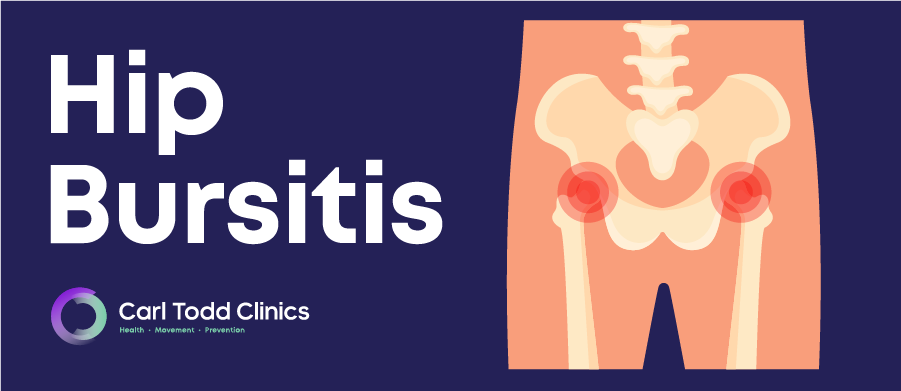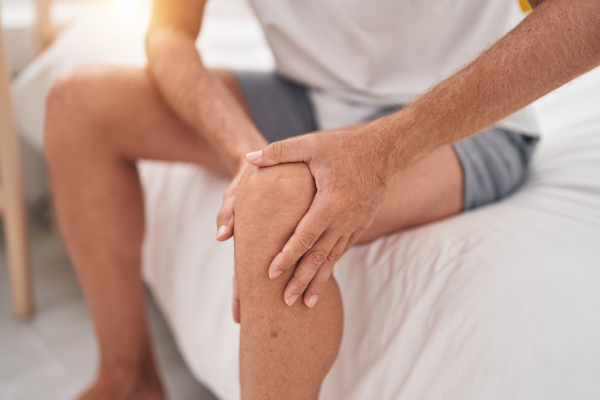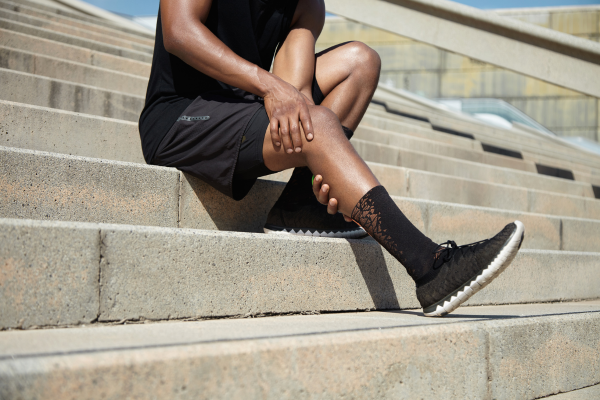Dealing with persistent pain and discomfort from hip bursitis can hinder movement and be an overall daily challenge for those suffering from it. Luckily, osteopathy offers a wide range of treatments which alleviate pain caused by hip bursitis, helping with long-term relief.
In this article, we will explore exactly what hip bursitis is, what causes it and its symptoms and (most importantly!) how osteopathic care can help.
What is hip bursitis?
Hip bursitis, also known as trochanteric bursitis, is a condition characterised by inflammation of the bursae around the hip joint. Bursae are small, fluid-filled sacs located throughout the body, including around joints such as the hip. They act as cushions between bones and soft tissues, reducing friction during movement.
The condition is commonly seen in athletes and manual labourers due to the repetitive movements that come with these jobs, and also in the elderly due to age-related wear and tear on joints. Studies show that women are more likely to develop hip bursitis than men which could be due to the difference in pelvic structure.

What are the causes of hip bursitis?
The exact cause of hip bursitis is unknown but it’s believed there are several factors that can contribute towards it. Repetitive motion of the hip from physical activities such as running or cycling can cause strain and lead to irritation of the bursa. It can also be caused by long periods of sitting and lying down which, over time, will cause inflammation.
Injury or trauma to the hip can cause damage to the bursa which can also lead to symptoms of hip bursitis. It can also develop from underlying health conditions like rheumatoid arthritis, osteoarthritis and diabetes. These conditions can increase the risk of developing hip bursitis due to increased chronic inflammation and metabolic changes.
Symptoms associated with hip bursitis
Hip bursitis presents different symptoms which vary in intensity and get worse with movement.
Common symptoms include:
- Sharp and intense pain on the outside of the hip which can radiate through the thigh and buttocks. This pain can increase at night when lying down and can worsen when carrying out physical activities.
- Visible swelling around the hip area indicating the inflammation of the bursa.
- Warmth and redness caused by the inflammation of blood vessels.
- A limited range of motion can occur with movement of the hip as it is restricted by pain and stiffness which can make it difficult to perform everyday tasks like walking or bending.
The diagnosis of hip bursitis is carried out by a health professional who will perform an exam, review your medical history and also may undertake an X-ray to determine the cause. The condition can be treated with rest, medication and cold compresses, but osteopathy helps to prevent symptoms and improve joint mobility.
How osteopathic care can help with hip bursitis
Osteopathy is the perfect treatment for those suffering from hip bursitis as it focuses on treating the whole person as well as the symptoms, improving overall health and wellbeing. Here’s a list of ways in which osteopathic care can help:
1. Reduces pain and inflammation
Osteopaths use hands-on techniques such as myofascial release and soft tissue manipulation which enhances blood flow to the affected area and reduces tension. Ultimately this aids pain relief, improving joint function and reducing stress on the hip.
2. Addresses underlying causes
As mentioned, osteopaths take a holistic approach, focusing on the body rather than just the symptoms when treating hip bursitis. This helps address underlying issues in the musculoskeletal system, helping to prevent flare-ups and helps with healing over time.
3. Improves stability
Osteopaths will often recommend exercises for hip bursitis to strengthen muscles around the hip which will improve stability, reducing the likelihood of hip bursitis getting any worse. Osteopathy will also help strengthen the core muscles which will take pressure off of the hip joint.
4. Self-care and advice
Another great benefit of seeing an osteopath is that they will give recommendations on self-care techniques such as a change of diet and lifestyle modifications. They will also give recommendations to help stress management, offering relaxation and breathing exercises. This will give you a personalised approach on your hip bursitis healing journey.
Are you struggling with the persistent pain and discomfort from hip bursitis? Get in contact with us today to discover the power that osteopathic care can have. Our specialised team offer tailored treatments that target the root causes of your pain, providing lasting relief and a pain-free future!





